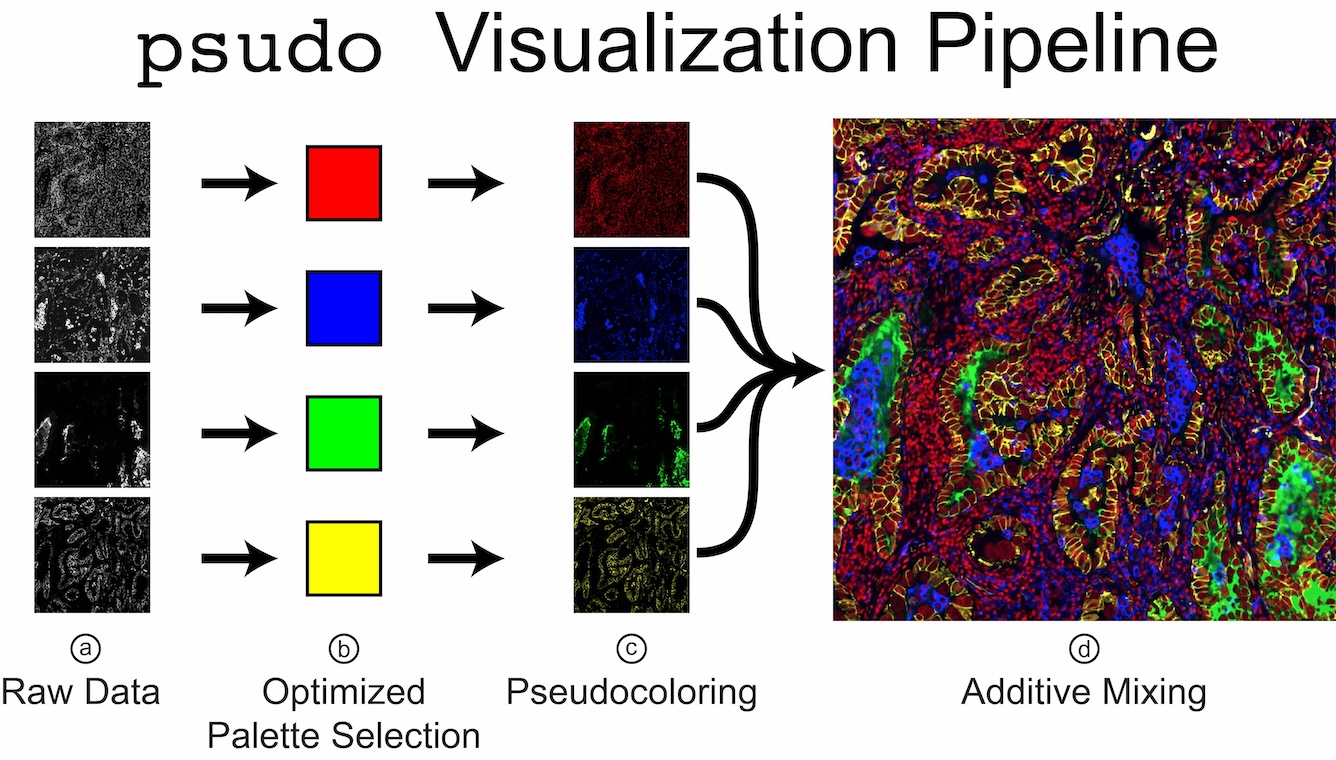
psudo: Exploring Multi-Channel Biomedical Image Data with Spatially and Perceptually Optimized Pseudocoloring
Computer Graphics Forum (EuroVis 2024), 2024.
Abstract Over the past century, multichannel fluorescence imaging has been pivotal in myriad scientific breakthroughs by enabling the spatial visualization of proteins within a biological sample. With the shift to digital methods and visualization software, experts can now flexibly pseudocolor and combine image channels, each corresponding to a different protein, to explore their spatial relationships. We thus propose psudo, an interactive system that allows users to create optimal color palettes for multichannel spatial data. In psudo, a novel optimization method generates palettes that maximize the perceptual differences between channels while mitigating confusing color blending in overlapping channels. We integrate this method into a system that allows users to explore multi-channel image data and compare and evaluate color palettes for their data. An interactive lensing approach provides on-demand feedback on channel overlap and a color confusion metric while giving context to the underlying channel values. Color palettes can be applied globally or, using the lens, to local regions of interest. We evaluate our palette optimization approach using three graphical perception tasks in a crowdsourced user study with 150 participants, showing that users are more accurate at discerning and comparing the underlying data using our approach. Additionally, we showcase psudo in a case study exploring the complex immune responses in cancer tissue data with a biologist.
Acknowledgements
This work is supported by the Ludwig Center at Harvard Medical School and NIH grant 1U01CA284207.